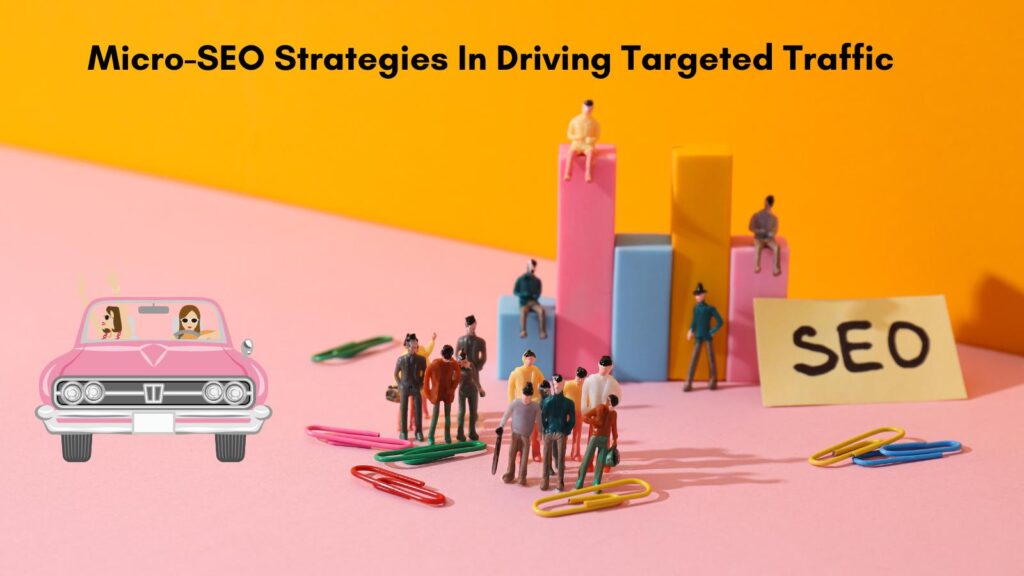Search engine optimization (SEO) continues to be critical in the ever-changing digital marketing world if you wish to build your online presence. However, as competition gets tighter, just a broad SEO strategy may not be enough to make you stand out. That’s where micro-SEO strategies come in, a practical granular approach targeting strategically chosen pieces to get you highly targeted traffic.
SEO continues to evolve in 2025. Staying updated is crucial to stay visible on searches, whether on mobile devices or laptops.
Here are three essential parts of micro-SEO strategies and how to get the right audience.
Table of Contents
1. Content Fragmentation and Personalization
Content fragmentation and personalization are essential to micro-SEO. Whereas traditional SEO revolves around optimizing the entire website or a large chunk of it, micro-SEO means optimizing one content segment simultaneously.
It breaks content into smaller, more specific fragments, allowing businesses to create messages that suit the needs of different audience segments.

An Example of Micro-SEO Strategies
For example, instead of publishing a single, broad article on ‘digital marketing trends,’ consider several highly targeted pieces. These could be pieces like ‘digital marketing trends for e-commerce’ or digital marketing trends for small businesses.’
Each piece is optimized for specific keywords and phrases for each particular audience.
Personalization isn’t just about who gets to see your ad but also when and how they see it, either in content formats, tones, or even publishing schedules. At this level of detail, writing more in tune with the intended audience results in higher engagement and conversions.
2. Local SEO and Hyperlocal Targeting
One of the most important features of micro-SEO is its emphasis on local SEO and hyperlocal targeting. Local SEO is meant to help increase your business’s visibility within a larger geographical area, whereas hyperlocal SEO takes the focus even closer, down to the neighborhood or block.
This strategy is beneficial if your business has a physical place of business or if you serve a particular local community.
Google My Places/Business: Form of Mico-SEO Strategies
To implement hyperlocal targeting, businesses should optimize Google My Business listings with accurate and detailed information such as location, open hours, and services provided. Also, creating location-specific content, like a blog post about the community events in this area, adds relevance and attracts the local audience.
Precise geographic references work as hyperlocal keywords and can further help in search engine rankings when used to query location-based items.
For example, a bakery in a specific neighborhood will include keywords like “best cupcakes in [neighborhood name]” or “ bakery near [local landmark].” This approach allows you to capture the attention of potential customers searching for your services near them, driving foot traffic and simplifying conversions.
Customer reviews are also crucial for boosting credibility and increasing click-through rates from search results. Tools such as ReputationStacker make it easier to gather and display these reviews.
3. Technical SEO and Micro-Moment Optimization
Technical SEO and focusing on micro-moments are essential parts of micro-SEO plans. Micro-moments are brief times when consumers want to learn, do, find, watch, or buy something.
These are intent-driven moments where you can attract users’ attention and attract targeted visitors. When optimizing for micro-moments, businesses need to consider the technical aspects.
These include website speed, mobile friendliness, and structured data. Ensure websites load quickly and work well on all devices to keep users and reduce bounce rates.
Structured Data
Structured data helps search engines understand content better, enhancing search listings with useful details at a glance. Additionally, engagement can be significantly improved by anticipating and addressing users’ questions or needs during these micro-moments.
That can be accomplished by creating content that matches user intent, which are typically quick how-to guides, short product comparisons, or localized service information.
Endnote: Micro-SEO Strategies
Micro-SEO strategies are a great way to direct targeted traffic. Businesses can attract the right audience using content fragmentation and personalization, local SEO and hyperlocal targeting, and technical SEO for micro-moment optimization.
Focusing on these detailed micro-SEO strategies can help businesses and bloggers increase their online visibility and engagement and boost conversion rates.
FAQs: Using Micro-SEO Strategies to Drive Targeted Traffic
Micro-SEO strategies focus on optimizing specific, smaller elements of a website or content, like targeting long-tail keywords, refining meta descriptions, or improving internal linking. These strategies help attract highly specific and relevant traffic.
Traditional SEO often focuses on broad, high-volume keywords, sitewide optimizations, and large-scale efforts. Micro-SEO is more about tackling narrower, micro-level optimizations to rank for niche keywords and reach specialized audiences.
They enable precise targeting by concentrating on specific keywords or user intents. Instead of casting a wide net, micro-SEO connects you with users actively searching for highly relevant topics or products.
Examples include optimizing for hyper-specific long-tail keywords, using localized SEO terms, updating old content for relevance, monitoring and fixing broken links, and adding schema markup to improve search visibility for niche queries.
The timeline varies. Small changes like updating meta descriptions might show results in a few weeks, while ranking for a long-tail keyword may take a couple of months depending on competition.
- 5 Top Tips for Social Realtors on X (Simple Social Media Management) - December 20, 2025
- Instagram Reels On TV: Should Your Content Hit The Big Screen? - December 18, 2025
- Valuing a Blog Business: 9 Mistakes That Lower Your Price - December 17, 2025



